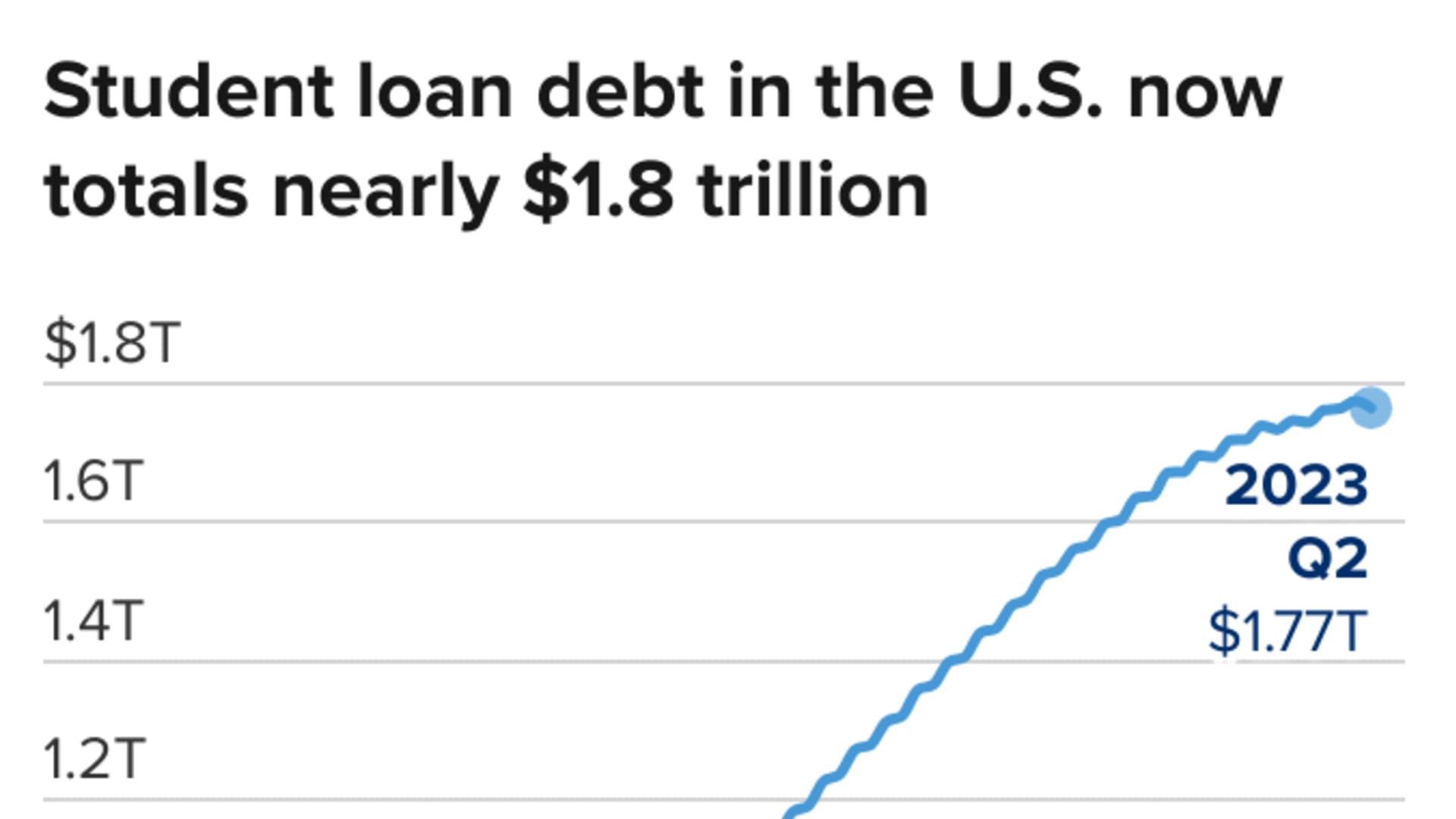
- To cover the rising cost of college, most families have to rely on a combination of resources.
- This year, student loans are making up a larger share, a new study finds.
With college more expensive than ever and a new financial aid application that's been problematic from the start, families are, understandably, having a hard time figuring out how to pay the tab.
As a new academic year gets underway, more students and their parents are turning to a familiar resource: student loans.
How families pay for college
Without financial aid, the price tag at some four-year colleges and universities — after factoring in tuition, fees, room and board, books, transportation, and other expenses — is now nearing $100,000 a year.
Get Tri-state area news delivered to your inbox. Sign up for NBC New York's News Headlines newsletter.
Typically, parent income and savings cover nearly half of college costs, free money from scholarships and grants accounts for more than 25% of the costs, and student loans make up most of the rest.
U.S. & World
More from Personal Finance:
The best private and public colleges for financial aid
Harvard is back on top as the ultimate 'dream' school
More of the nation's top colleges roll out no-loan policies
As of last year, the amount families actually spent on education costs was $28,409, on average, according to Sallie Mae's annual How America Pays for College report.
This year, parents are spending less out of pocket and relying on borrowed funds more, the education lender found. The share of parents taking out federal parent PLUS loans to help cover the costs of their children's college education has also grown, other reports show.
"We've really seen that in times of economic hardship, [families] are falling back on borrowing for college," said Jennifer Berg, vice president of public affairs for market research firm Ipsos.
"That's when the FAFSA really plays a role," Berg added.
The FAFSA is 'a stunning failure'
To get any college aid, students must file a Free Application for Federal Student Aid.
The FAFSA serves as the gateway to all federal aid money, including loans, work study and grants, which are the most desirable kind of assistance, and FAFSA completion can also boost a student's likelihood of going to college and graduating, studies show.
This year, however, problems with the new FAFSA have discouraged many students and their families from submitting an application. Among families who filled out the new form, just 29% said it was easier to complete, according to Sallie Mae.
"The vast majority said the new simplified FAFSA was anything but," said Rick Castellano, a spokesperson for Sallie Mae.

As of the last tally, 10.8 million FAFSA forms have been submitted — a significant decline from the approximately 17 million students who use the FAFSA in ordinary years.
And nearly half of families who filed the new FAFSA for the upcoming academic year said they experienced delays in receiving a financial aid offer from their school, according to Sallie Mae.
"The Department's poor planning has led to a stunning failure: Some college students might not have financial aid dollars in their hands in time to start classes in the next few weeks," said Beth Maglione, interim president and CEO of the National Association of Student Financial Aid Administrators.
College is worth it, even with loan forgiveness in limbo
When it comes to college, factors outside of parents' control continue to weigh heavily, according to a separate report by Fidelity, including issues with the FAFSA, rising costs and the future of student loan forgiveness.
Since President Joe Biden's first effort at broad-based loan cancellation was blocked, the Biden administration has since announced new plans to cancel student debt with more targeted guidance on who will most likely be eligible for the relief.
"Borrowing is up, at the same time, half of students expect their loans to be forgiven," said Sallie Mae's Castellano. "You have to wonder, is there a correlation there?"
But despite the uncertainty around covering the cost, the vast majority of parents said college is still worth it, according to Fidelity.
To that end, more families said that putting money away for higher education is a now top priority.
In fact, 74% of parents have started saving, Fidelity's 2024 College Savings Indicator found, a spike from 58% in 2007, when the study was first conducted.



